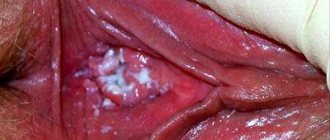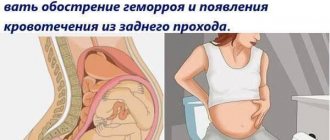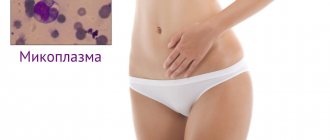The disease equally often attacks men and women who lead a sedentary lifestyle, lift heavy objects, suffer from digestive disorders, and are at risk for other factors.
With hemorrhoids, the venous and arterial vessels located in the rectum (the so-called cavernous bodies) dilate. The main reason for this is the weakness of the vascular walls, venous insufficiency. Blood overloads the caverns, their walls expand irreversibly, congestion appears, and hemorrhoids form.
Figure 1 - Statistics say that about 70% of the world's inhabitants are familiar with hemorrhoids.
Why do hemorrhoids occur?
The outflow of venous blood from the lower part of the rectum is carried out through three systems located under each layer of the intestinal wall, of which there are only three: the mucous membrane, the submucosal layer and the muscular layer; on the outside, behind a small layer of fatty tissue, dense connective tissue fascia covers the intestine. The veins of the intestine form branched weaves in three layers that connect to each other. The submucosal venous plexus receives blood not only from the intestine, but from the skin and sphincter; it is very thick and forms many tangles, which are called corpora cavernosa.
This structure of the venous plexus was unraveled only in the 18th century, and it immediately became clear how and why hemorrhoids occur. The cause of the disease is a violation of blood circulation in the venous glomeruli due to their excessive filling with stagnation of blood due to the initial inferiority of the vascular wall. The anatomical area is rich in microflora, which greatly contributes to inflammation. Hemorrhoids enlarge, become denser and stretch the connective tissue ligaments that support them, falling out, which further injures them.
Diet therapy (diet)
To ensure maximum effectiveness of pathology therapy, it is necessary to adhere to a diet. With its help, constipation is eliminated, against the background of which complications are often observed.
What can you eat
Patients are recommended to eat foods that contain large amounts of fiber. In this case, women are recommended to consume vegetables and fruits:
- apples;
- prunes;
- grapes;
- dried apricots;
- pumpkins;
- cabbage;
- beets;
- zucchini.
To eliminate complications of pathology, constant consumption of fermented milk products is recommended:
- curdled milk
- yogurt;
- kefir
Patients are advised to strictly adhere to the drinking regime. In addition to tea, coffee and other drinks, it is recommended to drink 1.5 liters of water daily.
What is prohibited to eat
To avoid constipation, you should avoid certain foods. Women are not recommended to consume flour products:
- pasta;
- white bread;
- buns;
- hard-boiled eggs.
Drinking alcoholic beverages during the treatment of hemorrhoids is strictly prohibited. The patient's diet should not consist of boiled lean meat and steep broths.
Starch and gelatin are strictly prohibited.
That is why patients need to give up jelly, jelly, and jellied meat. The consumption of certain vegetables and fruits is prohibited:
- persimmon;
- bananas;
- pears;
- pomegranate;
- blueberries
Hemorrhoids belong to the category of complex diseases that are characterized by a chronic course. The choice of a specific medicine is carried out in accordance with the individual characteristics of the woman and the stage of development of the pathology.
What causes hemorrhoids
From the mechanism of development of the pathological process, risk factors for hemorrhoids are “derived”, which in the maximum number of cases become the impetus for the development of the disease:
- sedentary and sedentary lifestyle, accompanied by overflow of all pelvic venous networks with blood;
- pregnancy and childbirth, when an enlarged uterus with a fetus requires a large volume of circulating blood;
- intestinal diseases with impaired formation of feces at the right time and normal consistency, occurring with alternating constipation and diarrhea;
- high static physical activity, with lifting weights;
- hereditary predisposition to venous diseases;
- spicy food and alcohol;
- anal sex.
With the combined influence of several risk factors, the likelihood of hemorrhoids increases significantly. Modern life with automation and low mobility, walking distance to infrastructure facilities, the development of the transport network - all this only promises an increase in the incidence of hemorrhoids and its “rejuvenation”.
Reasons for the development of the disease
Hemorrhoidal disease is considered one of the most common these days and affects a third of the entire population. In women, this disease can occur for the same reasons as in men.
Common reasons for the development of internal hemorrhoids include:
- heavy physical activity;
- lifting heavy objects or loads;
- improper, unbalanced diet and excess weight;
- frequent constipation, diarrhea and other problems with bowel movements;
- inactivity, sedentary work or lifestyle;
- bad habits.
Due to the above general factors, hemorrhoids can occur in almost any person of any age category, but there are also a number of purely female factors that provoke the appearance of the disease in the female half of the population.
Royal illness
Many historical figures suffered from hemorrhoids; it manifested itself with particularly severe suffering in the unrelated Tsars Boris Godunov and Alexei Mikhailovich, and his descendant Peter III. The failure of the French at Waterloo was also explained by the exacerbation of Napoleon's hemorrhoids. Of course, the life of high-ranking persons under chronic nervous stress was not very dynamic: sedentary work - on the throne and in the chambers on benches, abundant feasts with organic products, but still with the predominance of meat, which made defecation difficult.
Commoners suffered from hemorrhoids much less frequently and later in life, because they were not limited in their movements, their diet was entirely plant-based, they ate meat on holidays, and the only risk factors were hard work. The Russians were treated with onion, garlic and oatmeal hot poultices, lotions made from raw beets and potatoes, and for bleeding, taking a decoction of kidney herb internally. The fashion for leeches came from Europe, but the Orthodox did not have a “hemorrhoidal” saint, like the martyr Fiacre among the Catholics.
We will call you back
Leave your phone number
Let's sum it up
Situations that lead to the occurrence of hemorrhoids have long been known and studied. The causes of exacerbation of hemorrhoids do not remain a secret to modern medicine. Therefore, it is within the power of a person, if not completely removed, then to significantly reduce the risk of disease.
There are many effective ways to get rid of proctological diseases and, in particular, hemorrhoids. Early contact with a proctologist is a guarantee of successful treatment. And compliance with preventive measures is the key to ensuring that hemorrhoids will no longer bring you any unpleasant moments.
What are hemorrhoids like?
The classification of hemorrhoids is very simple: the nodes are located inside the rectum - internal hemorrhoids, only the external nodules are enlarged - external hemorrhoids, when both are combined - combined. According to the course, hemorrhoids are divided into complicated ones with blood clots in the nodes and infection, and, accordingly, without complications. Acute and chronic hemorrhoids with exacerbations and non-exacerbations, and remission with it is fundamentally impossible, because the nodes do not disappear completely.
The disease is staged in four stages, where the first is initial, when nodules just begin to form. With it, bleeding is possible, but the nodes are still so small that they are almost not felt; they are detected during examination due to the patient’s concern about periodic bleeding during bowel movements.
In the second stage, the nodules cause discomfort when they fall out, which is possible during defecation and straining physical activity, but the nodules are able to correct themselves after some time. In the third stage, the nodules easily fall out, sometimes there is no need to strain, but they do not adjust. Formally, this is classified as external hemorrhoids, but according to objective reality, it is a prolapsed large internal hemorrhoid. At this stage, the clinical manifestations of the disease are very noticeable and cause suffering.
In the fourth stage, the nodes are constantly on the outside, their size is quite large, they prevent the anal sphincter from closing, and therefore lead to unpleasant surprises. Not every patient’s hemorrhoids will go through all four stages, if you treat it and minimize the influence of modifiable risk factors, that is, those that can be removed, and only bad heredity cannot be removed.
Classification
Acute hemorrhoids
- or anorectal thrombosis, thrombosis of internal and external hemorrhoids. The process is accompanied by severe pain, since the nodes are equipped with a large number of receptors.
The acute form of hemorrhoids, in turn, is divided into three stages of thrombosis:
- The inflamed nodes acquire an unhealthy cyanosis, and pain is observed on palpation;
- Inflammation affects the tissues adjacent to the affected hemorrhoids;
- Necrotic modification - the affected nodes turn black.
Chronic hemorrhoids
- inflammation of the nodes, which is characterized by mild pain. This creates a false sense of “insignificance” of the problem.
During chronic hemorrhoids there are four stages:
- The patient feels only mild discomfort, inflammation of the internal nodes is revealed only during examination;
- There is periodic loss of inflamed nodes, which the patient can adjust independently without much effort;
- Repositioning of dropped nodes requires manual assistance;
- Repositioning of nodes is not possible.
Diagnosis of hemorrhoids
Diagnosis is simple; a proctologist will determine the pathology with his eye and finger. During an endoscopic examination - anoscopy, the anus and rectum are examined with a small optical device, then sigmoidoscopy and colonoscopy are performed, which are necessary to exclude concomitant pathological processes in the intestine that could “push” hemorrhoids or masquerade as them.
Today there is equipment that allows us to determine in detail the functionality of the anal sphincter; these studies may be needed for planning surgical treatment.
Treatment of hemorrhoids
First of all, it is necessary to relieve pain and eliminate factors that aggravate the clinical manifestations of the disease, which is impossible without changing lifestyle. To relieve pain, analgesics and local remedies are used: suppositories are better, because ointments and gels are difficult to inject inside - to the source of pain, and applying them around the anus is a half-measure. Today, a fairly wide range of drugs is offered for the local treatment of hemorrhoids, most of them are combination drugs that simultaneously relieve pain, anti-inflammatory and resolve blood clots. But the resorption of blood clots can easily lead to unstoppable bleeding, especially since this is one of the symptoms of the disease, so a visit to the doctor is mandatory.
It is urgent to change the dietary regimen by including large and very large amounts of fiber in the diet, which will soften the stool. In some cases, it will not be possible to do without an enema, the water in which should not be warm, only cold, otherwise everything will be absorbed in the intestine and the manipulation will not lead to the expected bowel movement. Personal hygiene is required using special intimate gels that do not dry out the delicate skin of the anatomical area. This should be done daily for the rest of your life so as not to promote the development of inflammation of the fiber.
Surgical treatment of hemorrhoids today is no longer as painful as it was a decade and a half ago. Minimally invasive techniques have been developed that not only give good long-term results, but also minimize the recovery period. Each case requires an individual approach; for some, it will be completely enough to inject a sclerosing substance into a tiny nodule, for others - infrared photocoagulation, and for others, the optimal result will only be obtained by applying a latex ring to the node.
In case of severe, non-reducible hemorrhoids, nodes are removed - different types of hemorrhoidectomy: open, closed, submucosal, stapler, hardware, etc. Today this is the most radical intervention, but it requires long-term rehabilitation and is not free from complications. To avoid this, you need to visit a proctologist on time, because hemorrhoids can be cured today.
A differentiated approach to choosing a treatment method for hemorrhoids depending on the stage of the disease, the use of minimally invasive treatment methods, allows achieving good results in 98-100% of patients.
Take care of yourself, book a consultation now
The main and most painful symptom of hemorrhoids is pain. During an exacerbation, the pain can be unbearable; this area is delicate and richly innervated; the slightest anatomical trouble grows into a huge problem. A tiny nodule, less than a centimeter in diameter, appears huge to its owner. The pain can be so severe that men even lose consciousness; women have a higher pain threshold and therefore tolerate the pain a little easier. Thrombosis is manifested by local swelling and very severe pain, there are also visual signs that only a doctor will see.
The intensity of pain is aggravated by tissue edema that accompanies inflammation and, especially, thrombosis of the node. The addition of bacterial flora can expand the boundaries of inflammation and lead to a purulent process in the surrounding tissue - paraproctitis. In fatty tissue there are no anatomical restrictions for the spread of inflammation, so the process spreads quite quickly with the formation of fistulous tracts, from which pus with an unpleasant odor is released due to the presence of E. coli in it. In this case, a general reaction of the body to the infection occurs: high fever, chills, weakness, malaise.
Unconventional home therapy methods
In addition to standard decoctions, ointments and tablets, there are other ways to gradually cure internal hemorrhoids. These unconventional methods can serve both for treatment and for periodic prevention of the disease.
Recommendations for auxiliary measures for the treatment of hemorrhoids include:
- a set of exercises against hemorrhoids - there are a number of special exercises, gymnastics aimed at eliminating hemorrhoids, such exercises can strengthen the muscles of the lower pelvis, tone them, strengthen the walls of the colon and can serve as an effective method of preventing recurrence;
- bowel cleansing through enemas - periodic cleansing of the intestines and body from toxins and accumulations can reduce the risk of developing problems with stool and, as a result, reduce the risk of hemorrhoids;
- yoga – it has been proven that regular yogic practices strengthen the muscles not only of the lower pelvis, but also the whole body, allow you to maintain muscle tone and prevent the development of many diseases, including proctological ones.
In addition, proper, moderate nutrition, which is maintained after surgery, will help improve internal processes and reduce body weight.
Bleeding from hemorrhoids
Bleeding in acute hemorrhoids is not always accompanied by pain, but it always frightens the patient. Blood is released towards the end of the act of defecation; when aspirin and special blood thinning drugs are used for other reasons, the bleeding is quite difficult to stop, and not without the help of medications. The use of non-steroidal anti-inflammatory drugs (NSAIDs), which damage the mucous membranes no matter how they are administered, helps bleeding, but pain-relieving rectal suppositories with NSAIDs are especially dangerous.
Prolapse of hemorrhoids
Chronic hemorrhoids without exacerbation are manifested by the loss of enlarged nodules and bleeding, the pain syndrome is so mild that patients complain only of minor discomfort, brief episodes of burning in the anal area. Since the nodules are covered with a mucous membrane that secretes secretions, increased humidity of the anus is possible; with insufficient intimate hygiene and in the hot season, diaper rash and maceration of the skin may appear.
The material was prepared by Ekaterina Anatolyevna Tafintseva, a general practitioner and head of the hospital at the Medicine 24/7 clinic.
Prevention
The goal of prevention for established internal hemorrhoids in women at any stage of development is to stabilize the blood flow of the rectum, anus, nearby tissues, and eliminate provoking factors. To do this you should:
- adjust the functioning of the digestive system;
- balance the food and drink diet;
- properly perform intimate hygiene;
- wear underwear made from natural fabrics;
- do not lift heavy objects;
- lead an active lifestyle, undergo an annual medical examination;
- Pregnant women should be regularly monitored by an obstetrician-gynecologist.
Hemorrhoids are a disease that can be controlled by following simple recommendations, which is the key to active longevity.










